Who can play a game company out of thin air? |Developer Biography 01 - Tomo Tajiri (above)
* The content of this article has been artistically manipulated.
It was just over a year after the "Atari Impact" that devastated the American game industry, and the impact of the event had naturally affected Japanese game makers as well.
Namco and Atari's collapse were inextricably linked, and Masaya Nakamura knew it - after all, he had signed the license for the Atari 2600 version of Pac-Man, which suffered an avalanche of sales and word-of-mouth in 1982. Atari was responsible for the port of the game, and Namco, who was waiting to make some money, didn't bother with it, resulting in the game's final quality being so bad that nearly half of Atari's 12 million pre-produced cartridges ended up in storage and had to be hauled off to the garbage disposal plant and destroyed, which was seen as a prelude to Atari's demise.

Left: Gameplay demo screen of the Atari 2600 version of Pac-Man advertised; top right: live footage of the arcade version of Pac-Man; bottom right. Live footage of the Atari 2600 version of Pac-Man - it's amazing that this blatant fraud sold over 7 million copies Although the game was a flop, the wealthy Atari paid Namco a hefty $3 million licensing fee up front, plus each subsequent cassette sale brought Namco a $1.1 The game's biggest woolly party has become the largest in the game industry, as Namco has made huge profits from Atari with nothing. Masaya Nakamura is not overwhelmed by the momentary victory, but is worried about it: after all, almost every player in the world knows that Pac-Man is Namco's IP, and now that Atari has made such a disgraceful move to the horizon, it's hard to imagine that players who have fallen for this scam won't come after them to take their anger out. So what can be done to appease gamers' petty emotions? As a veteran of the game industry, Masaya Nakamura's vision is evident at this point: What's wrong with this? Why don't we just develop another masterpiece?
If crisis awareness is divided into three Levels: planning ahead, sharpening the gun and mending the fold, then Masaya Nakamura's epiphany is comparable to Trump's march on the adult diaper industry before Biden was sworn in - he got it, and he got it all. As a 58-year-old comrade, Masaya Nakamura was clearly prepared, and in 1983 Namco's arcade masterpiece Teppanjin was born, and ported to the FC platform on November 8 of the following year. It was the first ever vertically scrolling shooter, and its popularity was such that Namco once dominated nearly 70% of the global arcade market, and built a new building with the game's name to capitalize on its popularity.
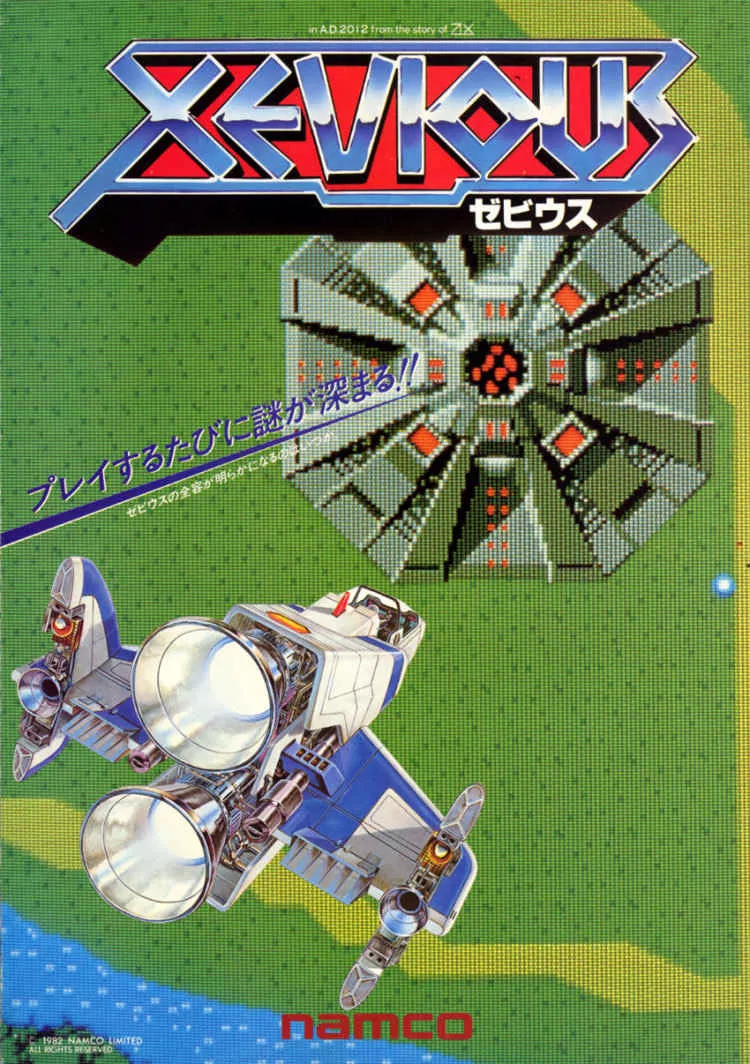
Teppanjin has been ported to many platforms including FC, and has spawned a series of spin-offs that are still famous today. Masaya Nakamura was sitting in the middle of "Teppanjin", thinking that he could rest easy, when a crudely printed magazine was dumped on his desk. When he saw the confused expression of Nakamura Masaya, Endo, the producer of "Teppanjin", told him the reason for his visit, which almost killed the president SAMA on the spot.
"President! Our bottoms have been lifted!"
Famous villains
The magazine that was dumped in front of Masaya Nakamura was called Game Freak, a monthly guide book that was originally only circulated in small circles of Tokyo gamers. He was puzzled by the booklet that came with the magazine, which described the process of passing Teppanjin in detail - if that was all there was to it - but the highest score for Teppanjin was 9,999,999. The highest score for Iron Chef is 9,999,999, but this guide explains how to get 10 million points in the game, with so much detail and explanation that even Masanobu Endo began to wonder if he was the game's producer after reading it. Because there was no such thing as a "speed-pass streamer" back then, Masanobu Endo took a keen interest in the source of the magazine, but little did he know that the mysterious man behind the guide would create a value far greater than that of Teppanjin a few years later: the man who is now the father of Pokémon - Tomo Tajiri.
His father, Yoshio Tajiri, was a salesman for Nissan, and his mother was a housewife. However, just as those named "beautiful" were not very beautiful, those named "handsome" were not very handsome. As a child, Tajiri was slow and silent, and instead of showing any of his talents as a small-town question maker, he ran in the direction of a small-town street skater.
Machida was the equivalent of Yanqing to Beijing in the 1960s. Machida was part of the Tokyo area in terms of administrative boundaries, but was largely deprived of the fruits of modern civilization, and Tom Tajiri spent most of his childhood in the literal sense of going to the mountains and the countryside. Tomo Tajiri's only hobby was catching bugs, but unfortunately there was no such thing as a Debug, so no one could have foreseen that this bug-catching boy would go on to develop games.

Teenager Tajiri TomoIn the late 1970s, the economic boom of post-war Japan ended Tajiri Tomo's life as a caveman, and Machida Nature, located in the Tokyo metropolitan area, was not spared from the rapid urbanization. The forests and fields of the past are gradually replaced by buildings and streets, and for the first time, the insect-catching boy Tajiri is out of use. But for the first time in modern civilization, Tajiri didn't fall behind, and he soon became almost crazily addicted to something even more unpleasant: video games. The most popular game of the year was Taito's (now a subsidiary of Skrill-Enix) 1979 Space Invaders, and almost every hall had a few of them to drum up business.
Even though arcade games were still in the nascent stages of technological development back then, the sound and fury hidden beneath the giant metal frame was enough to charm Tajiri Tomo, who had only dealt with bugs for over a decade, into a life of constantly exchanging all his allowance for coins to play games throughout his high school years, and when he ran out of money, he would stand at the door of the game hall and watch others play, and even once did so by skipping school for a month straight, setting a record for the entire school. After spending a few years in sustainable pennilessness, Tajiri Tomo played a Space Invaders to perfection, playing with a single coin until he blacked out almost every time, completing the transition from actively contributing to the trade deficit for the game hall to pulling the wool over the boss's eyes. Because he was so skilled and often coached other players through the game, he even became a "substitute player", and the owner of the local game hall simply gave Tomo Tajiri a used copy of Space Invaders - it's not that you're not welcome to come and play, but the shop really can't afford to lose money. Don't come back in the future.

Space Invaders, or "Little Bee" as it is commonly known in China, was popular in the 80s and was a representative of early arcade games If middle school-aged If Tomo Tajiri had stopped at being a one-coin-pass advanced gamer in middle school, he would have been a skilled game addict at best, and would not have been able to do much more. Fortunately, it wasn't the surface of the game that really piqued Tajiri Tomo's interest, but the technology and principles behind it. After playing through Space Invaders, Tajiri, already in high school, bought a computer (perhaps the popular NEC PC-98) with all his money and began learning the BASIC language, his first work being a complete port of the original Space Invaders to his own computer, a port known as My Invaders, which is now untraceable.
In 1981, at the age of 16, Tomo Tajiri participated in a game design competition held by Sega and won the silver medal. Although his idea did not become a reality, it certainly left an indelible mark on his heart. Although he did not win a prize in the game competition, he was still a delinquent who skipped school and played games.
top player
A special type of higher education in Japan is the high school, which is a collection of high schools and universities, and graduates two years earlier than the normal "high school-university" system. In high-sense terms, high schools are required to train highly specialized technical personnel for industry, so they place special emphasis on experiments and internships to train both theoretical and practical professionals, while in low-sense terms, high schools are a training ground for assembly line workers, known as Tokyo Kosanwa. In contrast to the other students who were busy with their studies and social life, Tom Tajiri spent all his time playing games as if he was seeking revenge - thus, he rose from being a famous tough guy in Machida to being the main fighter in several bad battles in Tokyo, and as his game skills became more and more skillful, more and more people wanted to ask him for high score tips. But back then, there were no online classes, and it was not realistic for Tajiri Tomo to teach them by hand, so on the advice of a friend, Tajiri Tomo resolved to compile the results of his cheats into a book, so that he could earn a little money and not waste the little life he had spent working hard in the game hall.
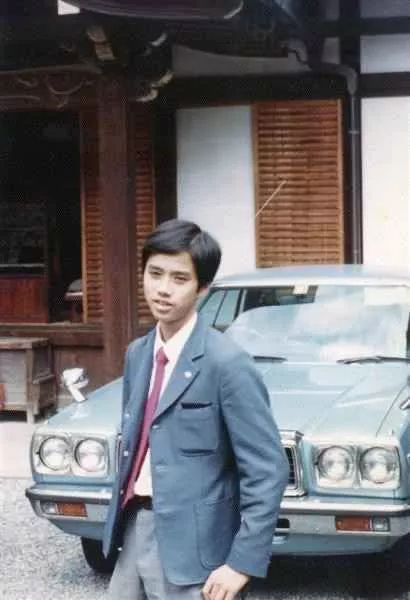
Entering the society of human high quality Tajiri Tomo published a book when he said it, after all, being from the early homo sapiens who roamed the mountains of Machida climbing big trees and ponds, Tajiri Tomo's After all, he came from early Homo sapiens who climbed trees and ponds in Machida. In 1983, he produced the inaugural issue of Game Freak, a shabby-looking booklet printed out on A4 paper, and a handwritten copy of Mana's Memoirs. But this booklet, which was written as if it were an elementary school handbook, was an unprecedented record of the scoring mechanics and gameplay techniques of popular arcade games such as Space Invaders and Pac-Man, and Tom Tajiri shared his experience of playing the games day in and day out for ten years. In the 1980s, when there was no Internet, there was no such thing as a "cheatbook", and players at the top of the charts all had their own unique methods of scoring points. --some people are born in Rome, it's the pattern, there's no way around it.
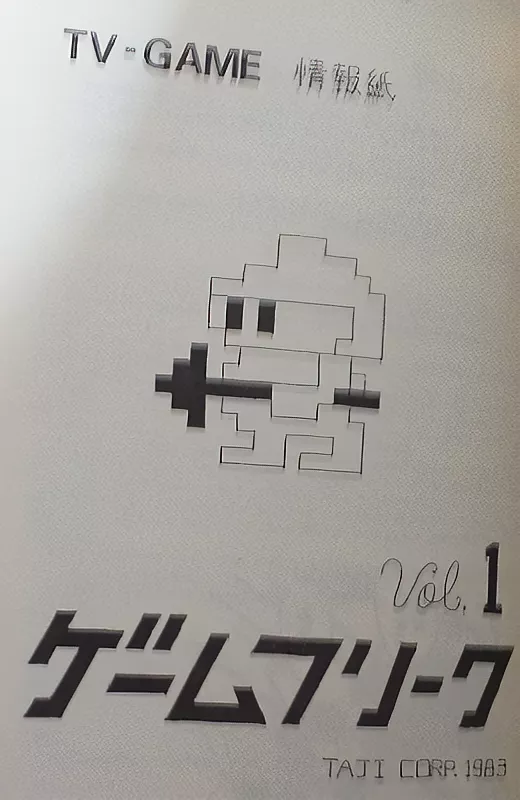
The cover of the inaugural issue of Game Freak, almost entirely handcrafted by Tom Tajiri, is bursting with craftsmanship Tom Tajiri defines Game The advantage of this was that it could be sold in a dedicated bookstore, without the time involved in the publishing process and without the middleman making the difference. Only 20 copies of the first issue were printed, priced at 300 yen each, and they were all sold out in just three days. Among those who were lucky enough to buy the first issue was an art student named Ken Sugimori. As a gamer with little business skills, he was impressed by the contents of the magazine and gradually developed a sense of sympathy for Tomo Tajiri, whom he didn't know, but as an extremely skilled art student, he hated him for his soulful hand-drawing on the articles. Soon, the impatient Sugimori Ken wrote a letter to Tajiri Tomo, entrusting the bookstore owner to pass it on to his divine friend, the general content of the letter was simple: Tajiri-kun, take my advice, the water of drawing is too deep for you to grasp, let me do it and see how I grasp it!
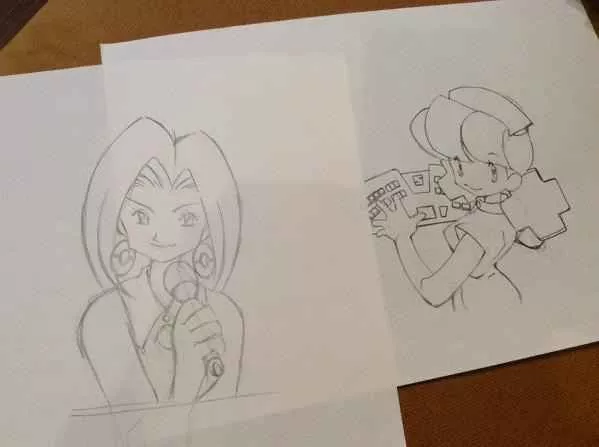
Part of Ken Sugimori's manuscript, from which you can already glimpse the epitome of what would become Pokémon Go Of course, just boasting about it isn't very convincing, so Ken Sugimori also slipped a few of his own illustrations into the envelope along with it. Tomo Tajiri, who was indeed overjoyed to get the letter, would not have expected that a professional would be willing to volunteer to take on what seemed to him to be a thankless job. As a sign of his concern, the social phobic Tajiri Tomo immediately wrote back and agreed on a time and place to meet, and asked him to bring more paintings for reference. On the day of the meeting, the two met, and Tajiri Tomo hired Sugimori Ken on the spot as his own artist - when talking about his aspirations, Sugimori Ken had said that his dream was to become an iconic manga artist like Akira Toriyama, and although he ended up on an unimagined path, his drawings were just like those of classics like Dragon Ball and Ararai and other classics have influenced the world.
two-person group
In 1983, Namco's masterpiece Teppanjin swept the Japanese arcade market, and Tomo Tajiri, who was used to playing stand-up shooters like Space Invaders, fell hard for the flying shooter that allowed him to move freely through scenes after the first time, and was not surprisingly addicted to it, giving it no shortage of praise in a Game Freak article The article in Game Freak did not spare any praise, giving the game a very high rating. But surprisingly, the 10 million point cheat for Teppanjin was not discovered by Tom Tajiri. Instead of joining the Nissan Motor Company as his father had hoped, he returned home to Machida, where he spent his days playing games under the pretext of "looking for inspiration", in addition to working on his artwork. processing. No one could have imagined that such a pair of crouching dragons and phoenixes would emerge from the small town of Machida, but what is even more surprising is that these two seemingly out-of-touch youngsters have really done wonders.
The illustrations by Ken Sugimori not only gave the magazine a more professional look, but also gave Tomo Tajiri more time to think and create. The two collaborated on Game Freak during the school year, which sold over 800 copies from the second issue, and that number continues to climb as the magazine goes on sale. Initially, Tomo Tajiri and Ken Sugimori's commitment was all for love, but the magazine's bestsellers brought them an annual income of over 3 million yen, which, although barely touching the average income of the working class in Japan at the height of the bubble economy, was a lot of money for the pair at the time - not to mention that they did not have to work hard from 9 to 5.
After returning to Machida, Tom Tajiri decided to use a portion of his profits to commission a publisher to typeset and color print Game Freak as a true monthly publication. The color edition of Game Freak was given the title of "Professional Edition" and expanded from 18 pages to a full 28 pages, with the price remaining the same at 300 yen, a real increase in quantity without an increase in price. It's enough to send Rockstar Games to the stars along with it.
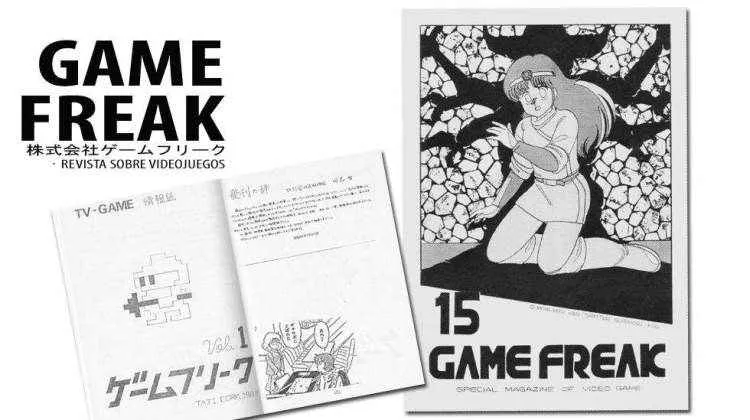
The illustrations drawn by Ken Sugimori make Game Freak look more like an official publication than the handwritten copies circulating underground Game Just after an issue of the professional edition of Freak was sent out, Tomo Tajiri, who was working "overtime" at a game hall, got the news that a player had broken 10 million points in Teppanjin. The players who broke the record were Yasuyo Ohori and Naohiko Nakagin, well-known arcade masters in the Kanto region, but Tajiri didn't believe that anyone could break the system's score limit. -Even Tajiri has to admit that, as a veteran of the game hall for over a decade, I still lack a basic understanding of the unbelievable creativity of human beings in their unprofessional endeavors. He decided to buy out the first draft of the completed cheatbook from the two of them, and decided to bind it separately and give it away in the next issue of Game Freak magazine. -so it seems that even if he doesn't make games in the future, Tomo Tajiri will be a good hand at marketing.
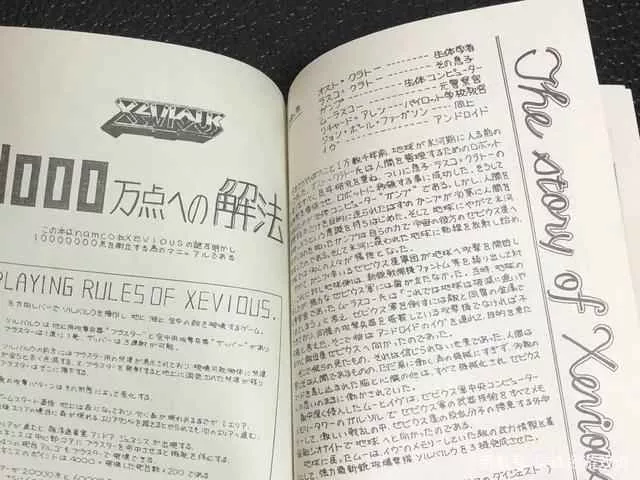
The Teppanjin cheatbook that came with Game Freak opened up new doors for the little-known magazine, just as Tomo Tajiri had The first 3,000 copies of Game Freak were snapped up by gamers within a week of hitting the shelves, and the magazine was reprinted within a month of its release date, eventually selling more than 10,000 copies, more than all similar issues combined. Written by Yasuyo Ohori and Naohiko Nakagin, the articles take full advantage of what little craftsmanship is left in Japan, perhaps because of the dedication to researching cheats, and the passages they present are almost unapologetic and full of everything they've learned, comparable to hand-on babysitting. The arcade game is designed to get players to throw more coins, so the game itself is not too difficult, and although most players can't break the 9,999,999 points barrier even after reading the cheats, it's not that hard to do a complete pass by memorizing the board in advance if you practice it a few times. As the cheats became more widespread, more and more players learned how to pass Teppanjin, and the revenue of the major game halls in the Tokyo area plummeted, this anomaly caught the attention of the game's producer Masanobu Endo, which led to the incident at the beginning of this article where Namco's underwear was stripped.
sudden and unexpected disaster
Namco president Masaya Nakamura himself comes from a technical background, only his skills are a little different from the game industry - Masaya Nakamura's family is a famous Japanese iron cannon family, and the first job he learned was casting cannons, and the first ten years of his life were filled with gunpowder in a physical sense; when he reached his twenties, the Masaya Nakamura enrolled in the Yokohama Technical College and began studying shipbuilding, more or less tainted with a touch of Eden Island's recruiting nucleus, and at first glance he was very spirited. But when he learned that the revenue of "Teppanjin" had recently shrunk because of this magazine, his first suspect was Masanobu Endo - this guy was not a light in his life, the president did not drink a toast, the director turned the table, the shareholder walked and you took a car. The president of the company is always a good person, but you don't drink the president's toast, you turn the table when the board members are eating, and you ride in the car when the shareholders are walking.
Faced with the questioning of his top boss, Masanobu Endo was neither argumentative nor refined and easy-going, and his expression was like being held down and poured with two pounds of clean and hygienic aloe vera juice in India, a physical sense of love. The magazine must not be allowed to ruin the future of "Teppanjin", and Tajiri Tomo's crime is so serious that it has caused a lot of discontent in the game hall, and this is no longer a normal rip-off. At the same time, the angry President Nakamura also did not forget to the early human PUA practical battle against Masanobu Endo: "Teppanjin" is your masterpiece, the content of this article in Game Freak is naked NTR, do not you want to prove your loyalty to the company? No need to take a stand, you go prepare for the press conference now, Tajiri Tomo must be banned!
Not only did Masanori Endo come forward and announce that the so-called "10 million points solution" was pure fiction, but Namco also paid off most of the game halls in the Tokyo area, and in addition to the usual practice of banning Game Freak fans, Nakamura Masaya also spread the news that Tomo Tajiri had made a fortune by fabricating false information among the gamer community through the game halls. Given the unbelievable difficulty of Teppanjin, and the fact that there were no fewer cloud players back then than there are now, more people than a small group of players who had personally verified the cheats began to see Tajiri Tomo as a fraudulent and deceitful person. The story of the young man's death
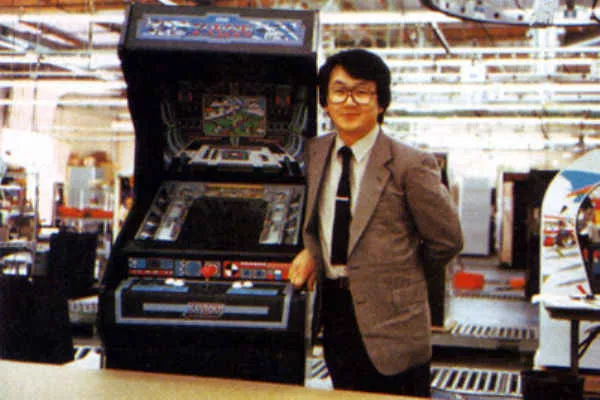
Masashin Endo could never have dreamed that his Tetsuboujin would make such a big splash, and he thus developed a strong sense of As soon as he arrived at the game room, all the people playing the game looked at him and laughed, some of them shouting, "Tajiriji, you've got a new rumor in your magazine! He didn't answer, but said to the counter, "Change two bags of coins, and ask for a good machine." Then he discharged nine Natsume Soseki. They yelled again in a deliberately loud voice, "You must have bought someone's rip-offs again!" Tajiri Ji opened his eyes wide and said, "How can you smear someone's innocence ...... out of thin air like that?" "What innocence? I saw you buy the cheats of Tetsuboujin the day before yesterday with my own eyes and hanged yourself to beat them." Tajiri Ji then reddened his face, the veins on his forehead blossomed out, arguing, "Exclusive can not be considered to buy ...... exclusive! ...... magazine, can it be considered a purchase?" The next thing you can do is to say something difficult, such as "10 million points" or "solution", which makes everyone laugh: the air inside and outside the shop is full of joy. From then on, if he wanted to play a game, he had to take a half-hour train ride to Shinjuku, but while his heart was feeling mixed up with the regular swaying of the carriage, he didn't know that there was another pair of eyes on him.
Heavenly Creatures
The trolley douchebag who follows women around and lays his hands on them is considered a part of Japan's intangible cultural heritage, but Tomo Tajiri is a socially-phobic nerd in his mid-twenties, and the man who stalked him all the way to Shinjuku is pretty discerning. In fact, that person is Masanobu Endo, who has been upset about the incident and has been unhappy with the simple and brutal way Masaya Nakamura has handled it, but can't afford to smash his own job to disgrace the president. After studying the article carefully, he decided that Tajiri was indeed a promising talent in the game industry and wanted to meet this young man whom he had never met but whom he had hurt deeply, to apologize to him in person and to make amends. He also wanted to meet this young man, whom he had never met but whom he had deeply hurt, to apologize and make amends.
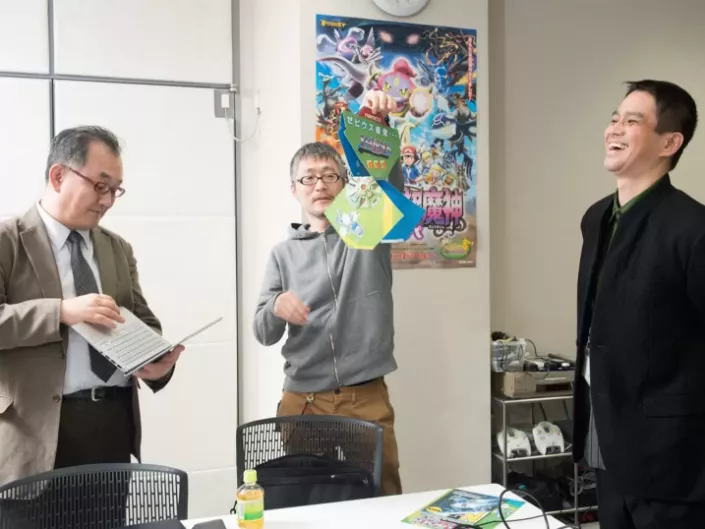
From left to right: Masashin Endo, Ken Sugimori, and Tomo Tajiri, photo taken on February 8, 2016On one side is a down-and-out critic who is momentarily disillusioned, and on the other is a star producer in the limelight. Their first meeting resembles the creation of Adam in Michelangelo's famous fresco, Genesis: it's as if Masashin Endo has descended from the heavens to offer his hand to Tom Tajiri, and their acquaintance heralds the dawn of a new era. Masanobu Endo, a self-proclaimed genius and a loner, is such a bully that the entire Namco doesn't get along with him, but the young Tokyo Yosho has a feeling that he hates Tajiri Tomo, and he immediately decides to lead the young man before him onto the right path, so he brings him to Masaya Nakamura soon after.
The hot-tempered President Nakamura didn't really like him, but he felt sorry for him because he had created his current situation. But he had to talk with Tajiri against his conscience, and thanks to Masanori Endo's constant intercession between them, the conversation barely went on.

Masaya Nakamura is actually very knowledgeable, but he does have a bit of a bursting temper Masaya Nakamura is not a stubborn old man, otherwise With his experience in writing Game Freak, he knew all about the popular video games of the time and could almost always see through to the essence, so he was born to be a critic. Masaya Nakamura had already seen how much Tomo Tajiri had made himself millions less with one issue of the magazine, and he understood how much power would be generated if he brought such a talent under his wing. From then on, President Nakamura began to instruct Masashin Endo to help Tajiri from time to time, and to use the east wind of Namco Games to help the development of Game Freak, so that the previously incompatible rivals could be turned into a good thing; Masashin Endo and Tajiri established a deep friendship that went beyond partners, and Tajiri was full of gratitude for his mentor in his book "Packed in Plastic: The Story of Youth in Television Games". In his book "Packed in Plastic: The Story of Youth in Television Games", Tajiri expressed his highest respect for his mentor and friend with gratitude.
Tomo Tajiri, who had hooked up with Namco, returned to the public eye almost overnight, this time no longer as a freelance writer who watches the sky for a living, but as a professional game critic with a bigwig behind him and a first-hand source of information. The Japanese gaming press, which had been silent at the time of Tajiri's demise, flocked to Machida like a cavalry charge after learning of his comeback. He was extremely socially perfunctory and devoted all his passion to his career, but he also resented magazines revising the content of his articles, so almost every collaboration ended in a quarrel with the editor. The only magazine that Tomo Tajiri had worked with for a long time published a semi-monthly magazine called FAMICOM Communication, which was the most credible game review media in Japan at the time. The FAMI Tomodachi score has become one of the most universally recognized game rating standards in the world.
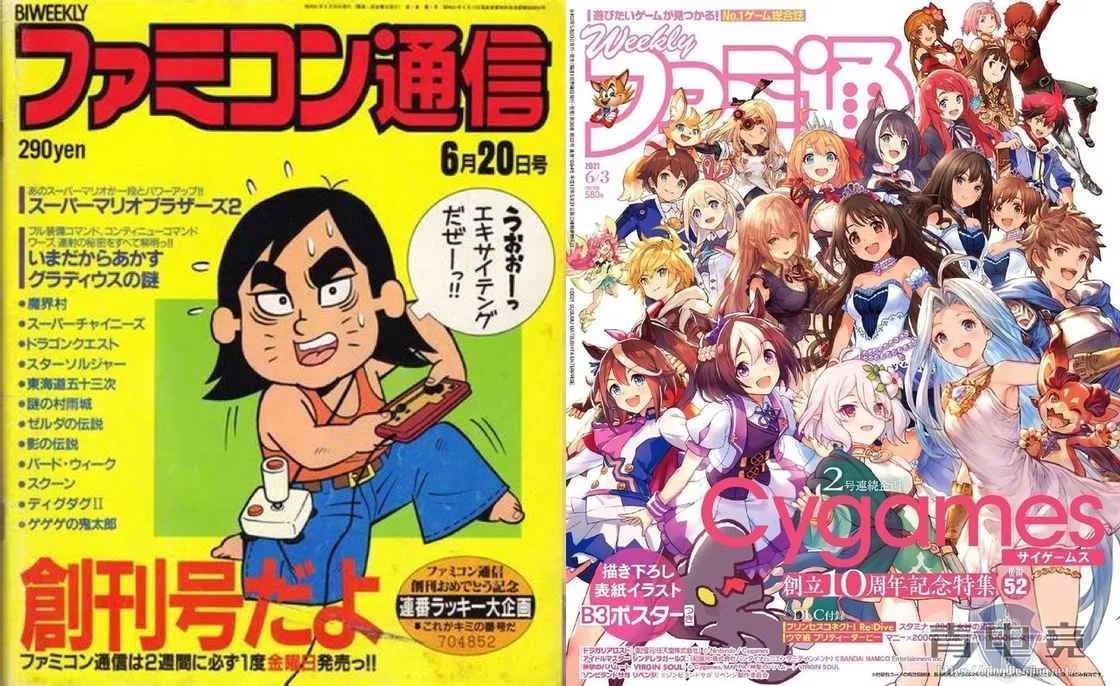
From Showa to Order and, "FAMI Pass" is becoming more and more second-rate - In 1985, Namco bought a 60% stake in Atari Games for $10 million, thinking it was a bargain. In 1985, Namco bought 60% of Atari Games for $10 million, and Masaya Nakamura, an honest man who thought he was taking the bottom of the barrel, became the receiver and had to leave the mess to Vice President Hidetoshi Nakajima - a heavyweight vice president who, once in the United States, had the good fortune to backstab Minoru Arakawa of Nintendo North America. This "proxy war", which lasted for nearly a decade, brought down both parent companies in Japan, coupled with the chip shortage that started in 1988 and the continued economic downturn in Japan - gamers became poor and had no more money to squeeze - all of which added to the already difficult situation of the gaming industry. The originally vibrant Japanese game market was soon replaced by countless abusive titles, and the game media, having lost the windfall, were ready to run away. How can we make a good game with this bunch of insects? Get out of the way, let me do it!
(To be continued)